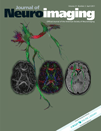Detection of Carotid Artery Plaque Ulceration Using 3-Dimensional Ultrasound
J Neuroimaging 2011;21:126-131.
Abstract
ABSTRACT
BACKGROUND
Three-dimensional (3D) ultrasound imaging is a new technique that maximizes the information and image quality of traditional 2-dimensional (2D) B-mode scanning. The aim of this study was to evaluate the ability of the 3D ultrasound technique to characterize ulcerated atherosclerotic carotid plaque.
METHODS
Using conventional 2D ultrasound, we examined 284 carotid arteries from 142 consecutive patients (101 men and 41 women; average age, 64 years). Eighty-two carotid arteries were symptomatic with atherosclerotic plaque causing 50-99% stenosis. In 62 arteries, the atherosclerotic plaques were visualized completely and were further processed to construct 3D images. Two independent observers rated plaque morphology according to a standardized protocol.
RESULTS
The 3D ultrasound showed carotid plaque ulceration more frequently than the 2D method (16.1% and 14.5% of plaques, for observers 1 and 2, respectively, versus 6.5% and 9.7% of plaques, for observers 1 and 2, respectively, P= .125 and P= .063, for observers 1 and 2, respectively). The interobserver reproducibility was very good for both methods (κ= .973, SE = .027, P < .001 for 3D, and κ= .885, SE = .055, P < .001 for 2D), although the 3D method was slightly superior to 2D.
CONCLUSIONS
3D ultrasound reliably characterized the surface morphology of atherosclerotic carotid plaques. A trend of superiority of 3D ultrasound over 2D was found in detecting ulcers of carotid artery plaque.




